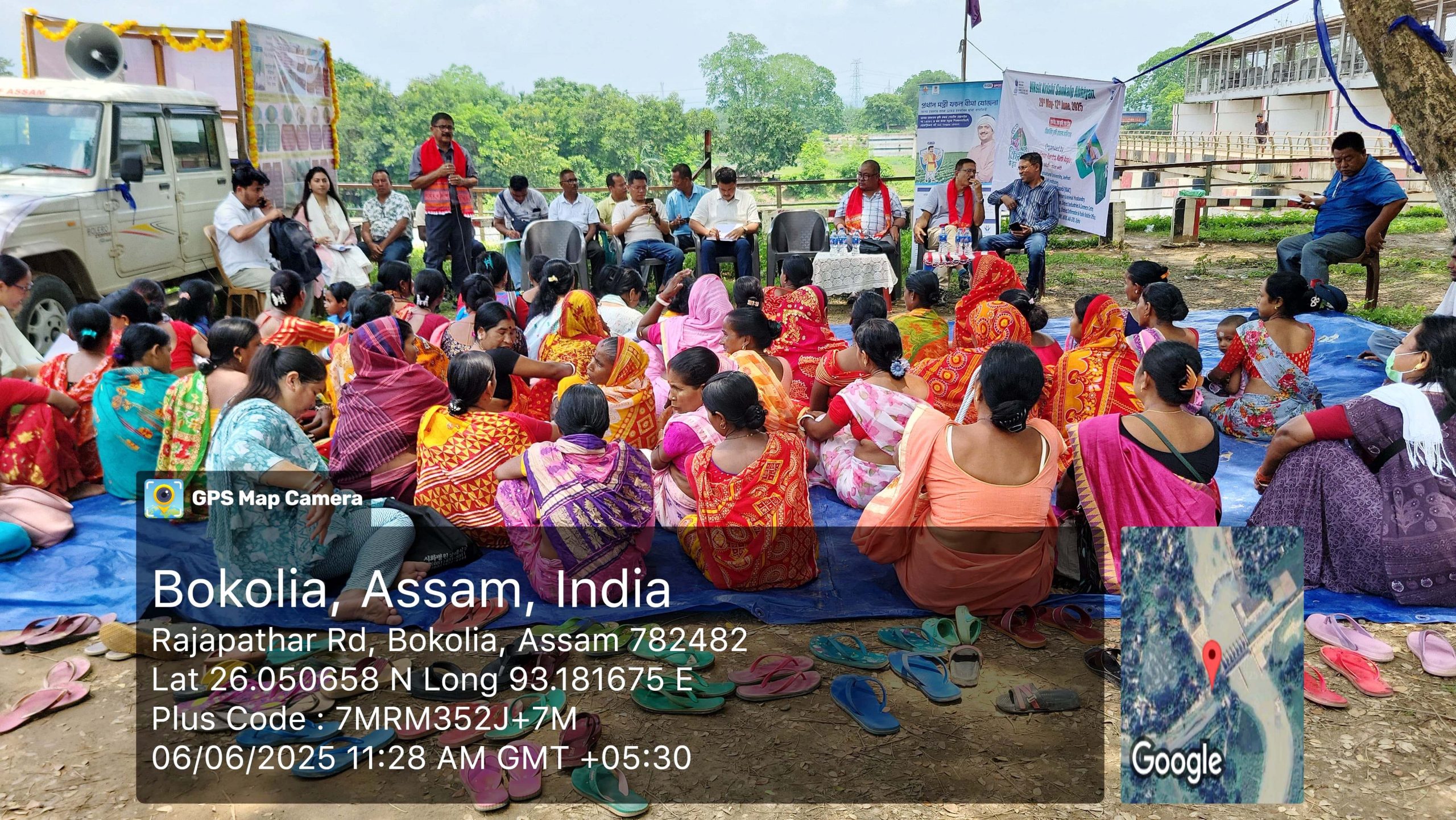
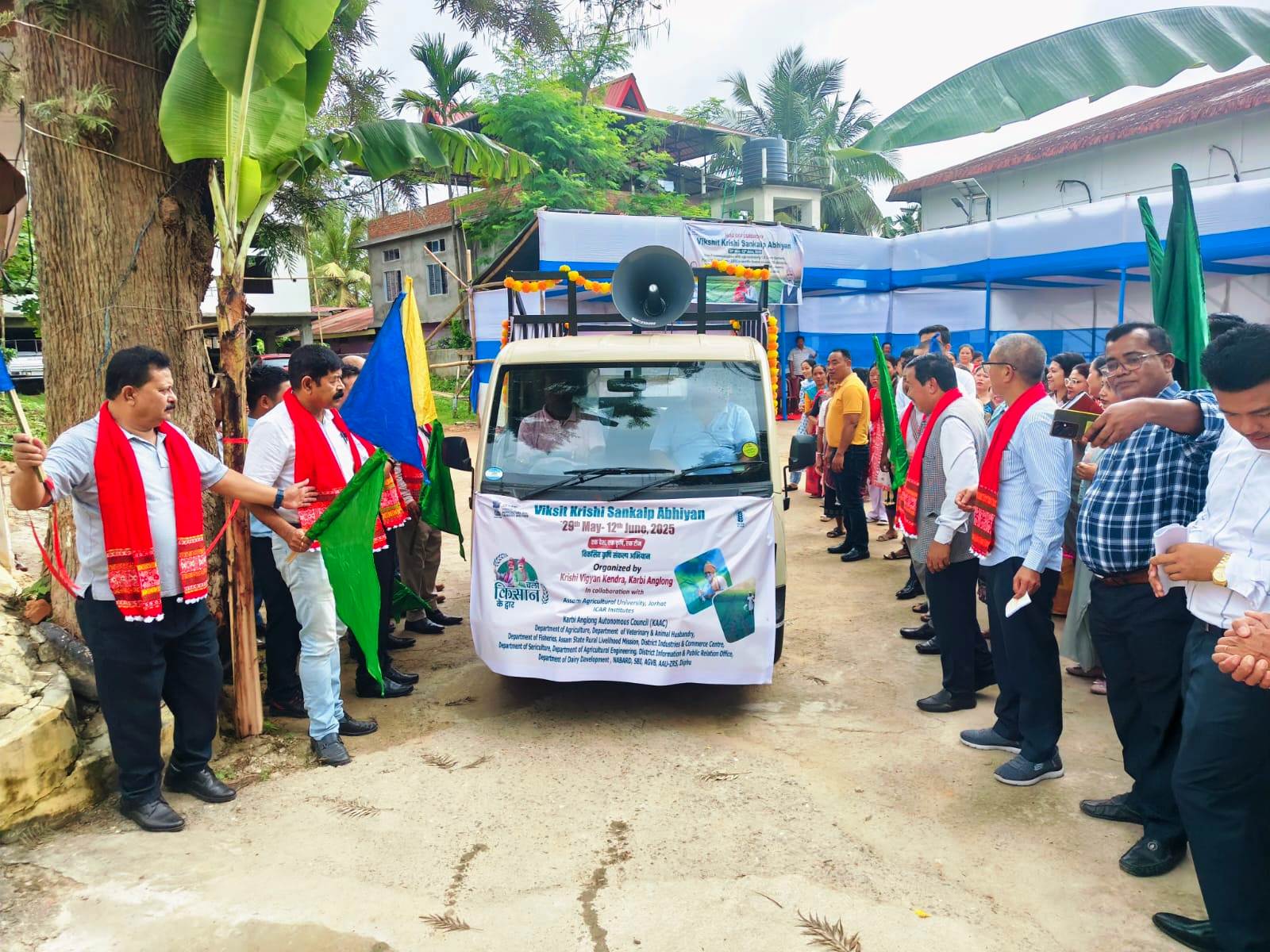

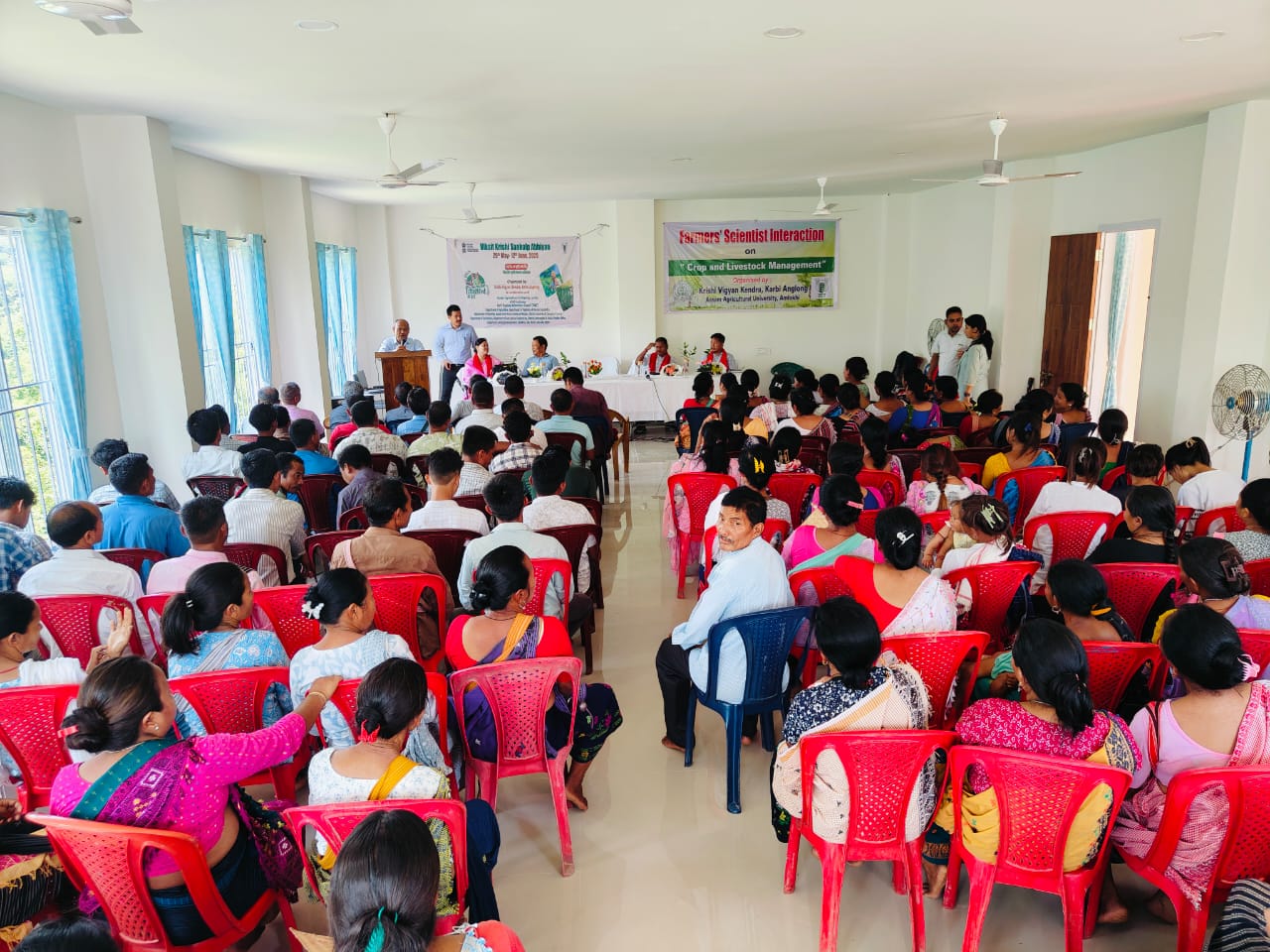
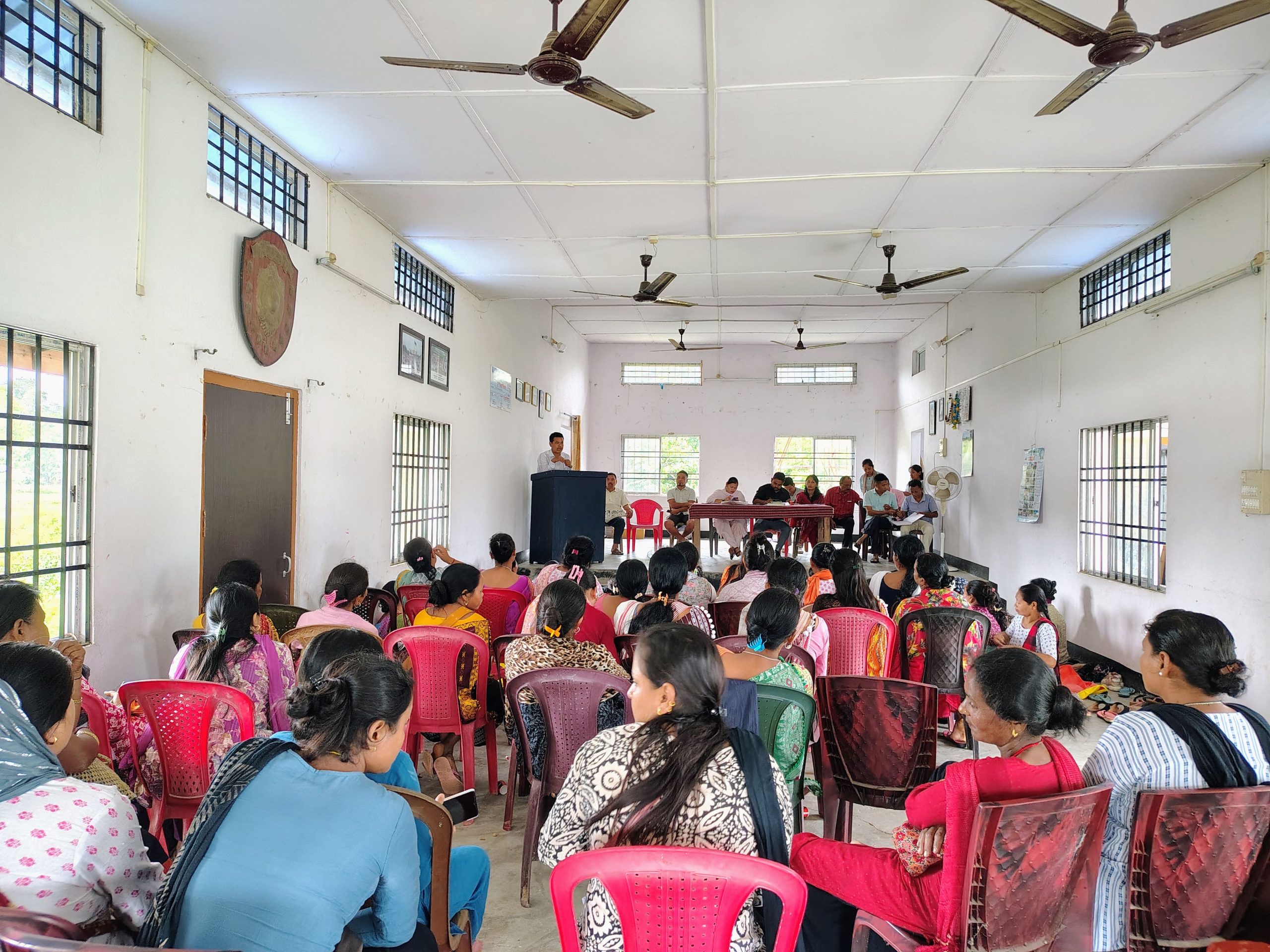

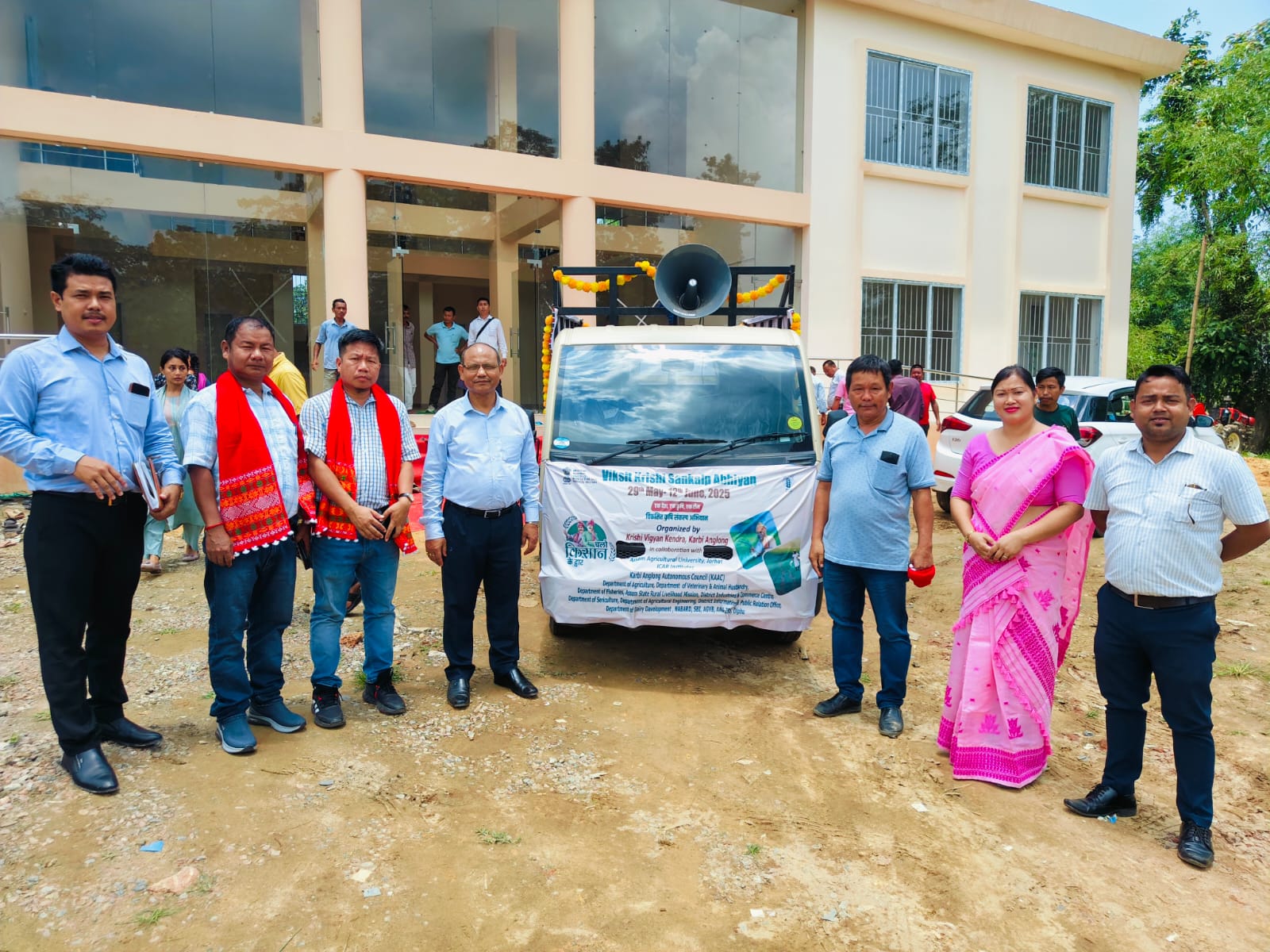
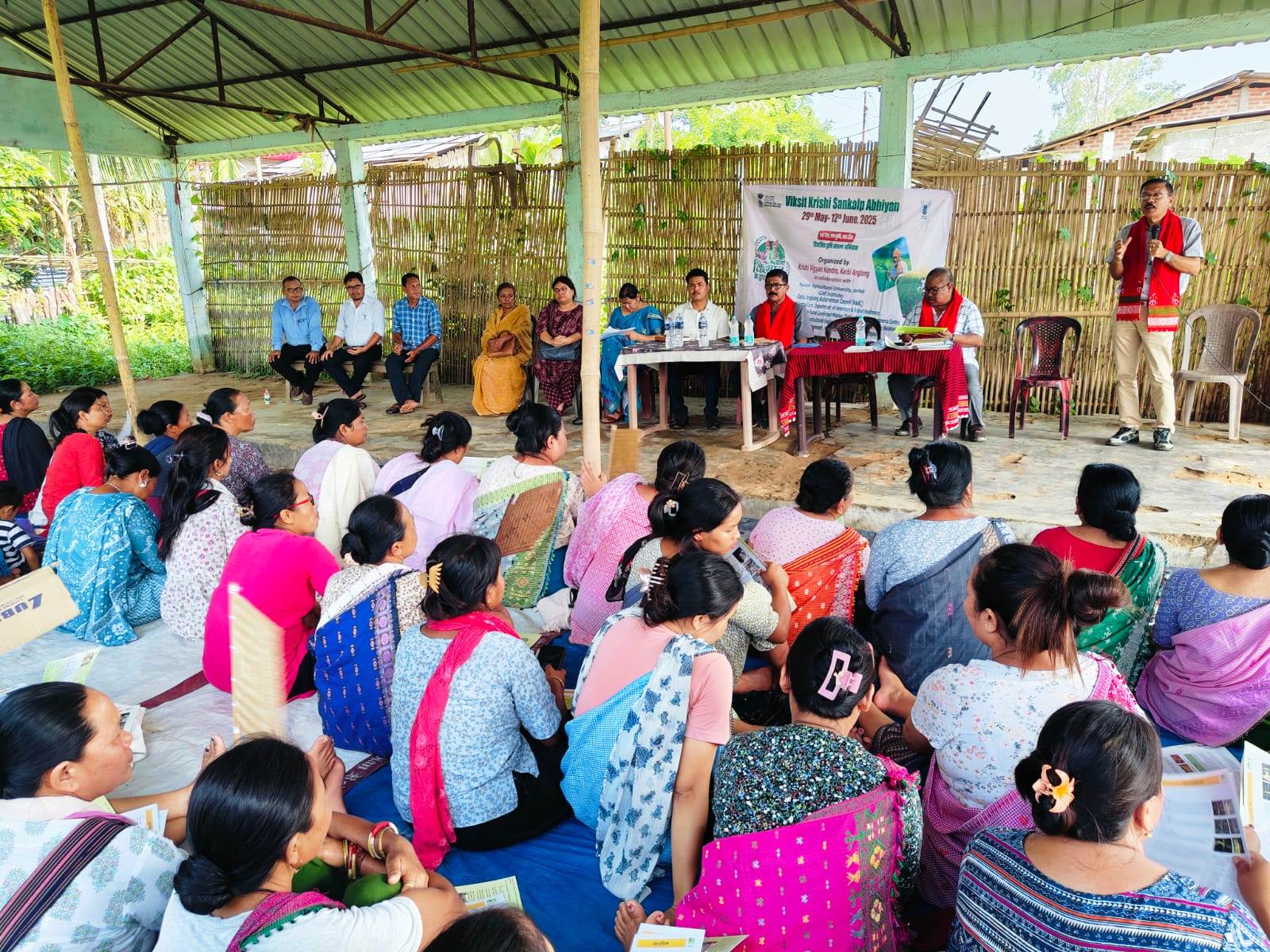
15 Day-Vikshit Krishi Sangkalp Abhiyan (VKSA) organized by KVK, Karbi Anglong, Assam Agricultural University.
From the Desk of the Head

Dr. Monuj Kr. Doley
About KVK Karbi Anglong
Assam Agricultural University at a grance
Geo Location
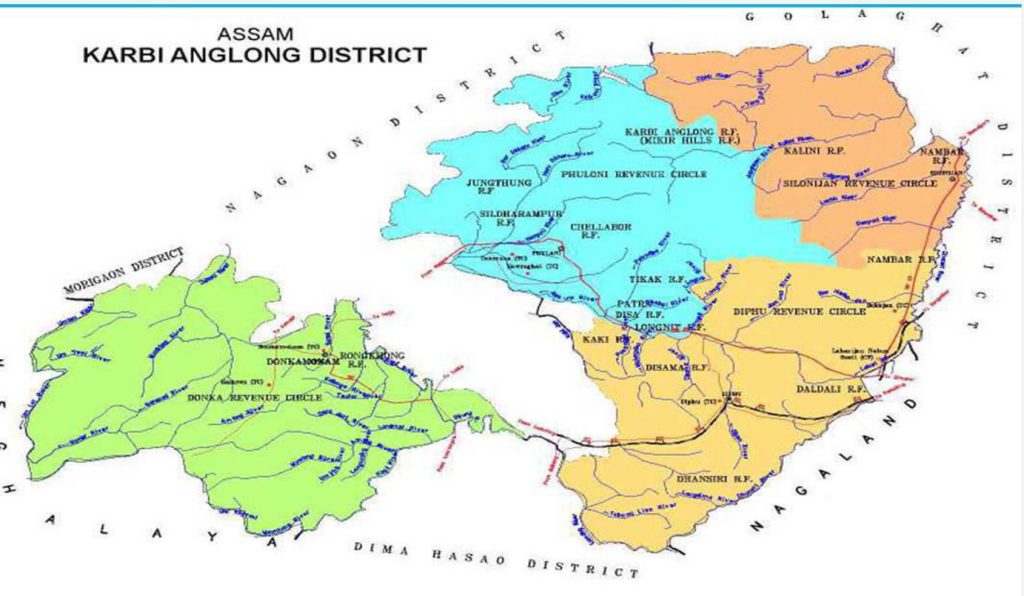
District Profile
- Agriculture – Animal Husbandry
- Agriculture – Sericulture
- Animal Husbandry – Horticulture
- Animal Husbandry – Sericulture
- Agriculture – Animal Husbandry – Horticulture
- Agriculture – Animal Husbandry – Fishery
- Agriculture – Animal Husbandry – Sericulture
- Agri. – Horti. – Animal Husbandry – Sericulture
- Agri. – Fishery – Animal Husbandry – Horticulture
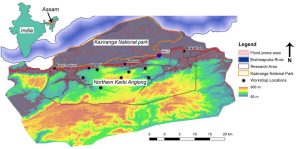
Physiography
The altitude of Karbi Anglong district varies from 600 meters in the North range to 900 meters on South range, while that of the valley area range from 75 meters to 150 meters.
Topographically the Karbi Anglong district is divided into two natural divisions by a portion of the Nagaon district which bifurcates this district to form two detached parts. The eastern part comprises of two sub divisions Diphu and Bokajan and the other part known as Hamren sub division. The entire district consists of hilly region. Only narrow part of plains land found along the banks of the river Kapili, Dhansiri, Jamuna and Barapani. The hilly region ends in the Brahmaputra valley in the north, the Dhansiri plains on the east and on the west the plains of river Jamuna. Beyond this narrow plains the hills sharply rises and covered with dense forest. The upper reaches of Dhansiri and Kaliani are almost destitute of population. The beauty of nature from the blue hill ranges with wilderness of dense trees can be viewed from some 40 km away of Nagaland
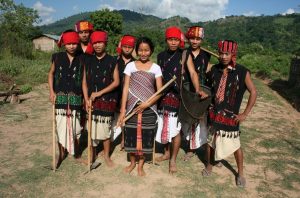
Demography
The population of the district is as per 2011 census is 9,56,313 out of which 843347 are rural (88%) and 112966 are urban (12%) with a population density of 92 per square kilometer. The population of the district consist of 490167 male (51%) and 466146 female (49%). The district Karbi Anglong has a tribal population of 538738 (56%) and schedule caste population of 44961 (4.7%). The male literacy rate and female literacy rate in the district are 76.14 % and 62.0 % respectively contributing to the 69.25 % total literacy rate of the district.

Climate
The region witnesses typical sub-tropical monsoon climate characterized by high relative humidity (73 to 84%) throughout the year. The overall climate is characterized by hot and moist summer and cool winter and is divided into four distinct seasons. The hot and the cold months are very distinct.

Soil
The soils of Karbi Anglong are well drained, brownish to yellowish red with structural B-horizon classified under inceptisols, alfisols and Ultisols. It is made up of laterised red soils and non-laterised red soils. They are fairly well-drained soils. The soils are moderately to strongly acidic, with high organic matter content and low cation exchange capacity (CEC). The texture of topsoil mostly varies from sandy to loam soil and as such prone to soil erosion. The soil, in general, is sandy loam with good depth except on eroded hill slopes. As the soil is acidic and contained organic matters and nitrogen these help in producing many crops like paddy, sugar cane, mustard, cotton, maize including fruits like citrus, orange, pineapple, cashew nut, banana, etc.

Land and land used
Out of total rural population of Karbi Anglong district 80% people are cultivators. They earn their livelihood from agriculture which forms about three fourth or more of the total population. The economic development of an area depends on land use pattern and uses of its resources. Although resources are plenty, these are not properly utilized for the economic benefit. A major portion of the land of the district is remained unused along with other ground resources.
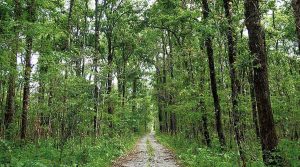
Forestry
The forest of Karbi Anglong offers a big economy not only to the district but also to the state. The forest are covered with dense bamboo and grasses and valuable trees such as Hollock, Gamari, San, Sonaru, Titasopa, Bonsum, Koroi, Foma etc. These forest products are exported from the district as timber which helps in generating economy to the district authority. The forest product plays a vital role to the natives of the district as they can meet their day to day demand of fire wood for cooking, thatches and bamboo for dwelling houses.

